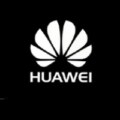
Xiaomi Mi 11 Ultra : Full Specification, Detail Review & Price
- April 28, 2021
- 4:07 pm
- No Comments
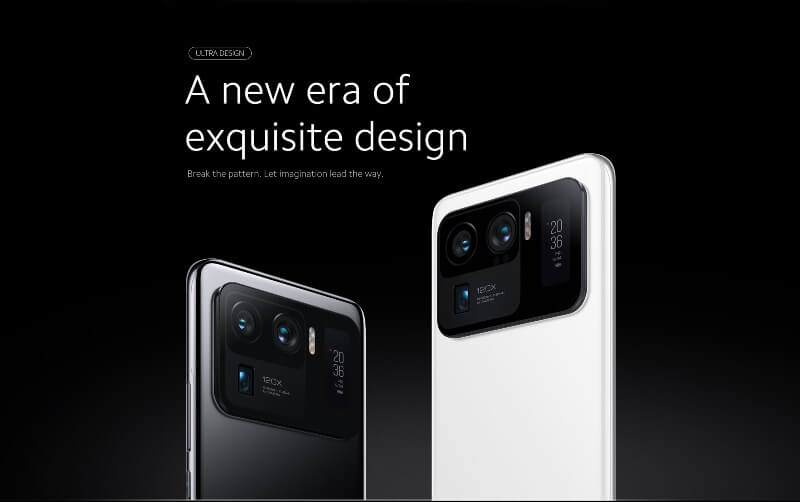
Xiaomi Mi 11 Ultra : Details
Xiaomi Mi also has an entire family of phones with the Mi 11 Lite, Mi 11i, Mi 11, Mi 11 Pro, and Xiaomi Mi 11 Ultra, These come in a number of price ranges, so no matter what your budget is, you’ll be able to find a Mi 11 that suits your needs. The Pro version is only available in China, which is the main difference from the Mi 10 series. Meanwhile, the successor to the China-only Mi 10 Ultra is now available in Europe and other parts of the world.
Xiaomi Mi 11 Ultra : specifications
General
| Model | Xiaomi Mi 11 Ultra |
| Released | 21 Dec, 2024 |
| Status | Available |
| Price | ₹69,999.00 |
Network
| Technology | GSM / CDMA / HSPA / EVDO / LTE / 5G |
| Speed | HSPA 42.2/5.76 Mbps, LTE-A, 5G |
| 2G Network | GSM 850 / 900 / 1800 / 1900 - SIM 1 & SIM 2 CDMA 800 |
| 3G Network | HSDPA 850 / 900 / 1700(AWS) / 1900 / 2100 CDMA2000 1xEV-DO |
| 4G Network |
1, 2, 3, 4, 5, 7, 8, 12, 17, 20, 28, 32, 38, 40, 41, 42, 66 - International |
| 5G Network 5G Network Band | 1, 3, 5, 7, 8, 20, 28, 38, 40, 41, 77, 78, 79 SA/NSA - International |
Design
| Type Design Type called form factor refers to a mobile phone's size, shape, and style as well as the layout and position of major components of phone. There are three major form factors seen in mobile phones => bar phones, folding phones and sliding phones. | Bar |
| Dimensions | 164.3 x 74.6 x 8.4 mm (6.47 x 2.94 x 0.33 in) |
| Weight | 234 g (8.25 oz) |
| Waterproof | No |
| SIM SIM (Subscriber Identity Module) is a small card that contains mobile network subscriber's account information. This allows the phone using the card to attach to a mobile network. The SIM card is most commonly associated with GSM and UMTS mobile networks. Moving a SIM card from one phone to another allows a subscriber to switch mobile phones without having to contact their mobile network carrier. SIM cards can also be used by a phone to store limited amounts of data, such as phone numbers and text messages. | Dual SIM, (Nano SIM, Dual Stand-by) |
| Colors | Ceramic White (Cosmic White), Ceramic Black (Cosmic Black) |
| Build | Glass front (Gorilla Glass Victus), ceramic back, aluminum frame |
Display
| Display Type Display Technology => A number of display technologies and types used in mobile phones => TFT (Thin Film Transistor), IPS (In-Place Switching), OLED (Organic Light Emitting Diode), AMOLED (Active-Matrix Organic Light-Emitting Diode), Super AMOLED (an even advanced version of AMOLED), Resistive Touchscreen (Resistive touchscreens contain two layer of conductive material with a very small gap between them which acts as a resistance), Capacitive Touchsceen (Capacitive touchscreen technology consists of a layer of glass coated with a transparent conductor) | OLED |
| Size | 6.81 inches |
| Resolution | 1440 x 3200 pixels |
| Pixel Density Pixel Density (PPI) is refers to the concentration of pixels on a particular display, measured in pixels per inch (ppi). Pixel density is calculated by dividing the diagonal pixel resolution of a display by its diagonal size, higher pixel density better display quality. | ~515 ppi density |
| Display Protection Display Protection => Gorilla Glass is a special alkali-aluminosilicate glass shield with exceptional damage resistance that helps protect mobile displays from scratches, drops, and bumps of everyday use, It is always better to go for a smartphone with Gorilla Glass for that added protection and peace of mind. | Corning Gorilla Glass Victus |
Software
| Operating System OS => Every computer system run on a base software called Operating System (OS). Operating System controls all basic operations of the computer (such as smartphone, PDAs, tablet computers and other handheld devices). The Operating System allows the user to install and run third party applications (apps), apps are used to add new functionality to the device. | Android 11 + MIUI 12.5 |
| User Interface UI or user interface of a device is the look and feel of the on-screen menu system. How it works, its color scheme, how it responds to button presses, all of these things are part of the user interface. | Yes |
Hardware
| Chipset Chipset is a group of integrated circuits designed to perform one or a more dedicated functions, often with real time computing constraints, Popular smartphones are equipped with more advanced embedded chipsets that can do many different tasks depending on their programming. | Qualcomm SM8350 Snapdragon 888 5G (5 nm) |
| CPU CPU (Central Processing Unit) mostly known as processors, CPU processes instructions in order to carry out certain functions that make your device operate properly. Processors are often described as the brain of computers, smartphones and tablets, Smartphones and tablets rely on processors to carry out their every task, Processors are an incredibly important factor in selecting any type of computing device, including your smartphone. | Octa-core (1x2.84 GHz Kryo 680 + 3x2.42 GHz Kryo 680 + 4x1.80 GHz Kryo 680) |
| GPU GPU (Graphics Processing Unit) is a single-chip processor designed to rapidly manipulate and alter memory to accelerate the creation of images in a frame buffer intended for output to a display, This includes things such as lighting effects, object transformations, and 3D motion. | Adreno 660 |
| Card Slot Memory Card Slot is a special slot for inserting a memory card. Memory cards allow you to expand the phone's built-in memory, A memory card (sometimes called a flash memory card or a storage card) is a small storage medium used to store data such as text, pictures, audio, and video, for use on small, portable or remote computing devices such as mobile phones, mp3 players, digital cameras. | No |
| Internal Mobile Internal Storage and RAM | 256GB 8GB RAM, 256GB 12GB RAM, 512GB 12GB RAM |
| Sensors Sensors are electronic components that detects and responds to some type of input from the physical environment. The specific input could be light, heat, motion, moisture, pressure and location, The output is generally a signal that is converted to use in computing systems, a location sensor, such as a GPS receiver is able to detect current location of your electronic device. |
Fingerprint (under display, optical), accelerometer, gyro, proximity, compass, barometer |
| Flash Storage Type | UFS 3.1 |
Main Camera
| Primary Camera is able to capture photographs and usually videos, The most important characteristics of a camera are the resolution (measured in megapixels), lens focus type (fixed or automatic), higher megapixel cameras are known to capture higher quality photos, but not always a good measurement of the photos quality. | 50 MP (wide) + 48 MP (periscope telephoto) + 48 MP (ultrawide) |
| Camera Features |
Dual-LED flash, HDR, panorama, 1.1” AMOLED selfie display |
| Video | 8K@24/30fps, 4K@30/60fps, 1080p@30/60/120/240/960fps, gyro-EIS, HDR10 rec. |
| Image | 4320p |
| Flash Flash Light => There is commonly two types of flash lights are used in camera mobile phones, LED Flash (LED flash offers lower power consumption with drive circuitry that takes up very little room, LEDs can be strobed faster than any other light source), Xenon Flash (xenon flash produces an extremely intense full-spectrum white light for a very short duration) | Dual-LED dual-tone flash, HDR, panorama, selfie display |
| Triple |
50 MP, f/2.0, 24mm (wide), 1/1.12", 1.4µm, Dual Pixel PDAF, Laser AF, OIS 48 MP, f/4.1, 120mm (periscope telephoto), 1/2.0", 0.8µm, PDAF, OIS, 5x optical zoom |
Selfie Camera
| Single | 20 MP, f/2.2, 27mm (wide), 1/3.4", 0.8µm |
| Features |
HDR, panorama |
| Video | 1080p@30/60fps, 720p@120fps, gyro-EIS |
Connectivity
| Bluetooth Bluetooth is a wireless communications technology for exchanging data between mobile phones, headsets, computers and other network devices over short distances without wires, Bluetooth technology was primarily designed to support simple wireless networking of personal consumer devices. | 5.2, A2DP, LE, aptX HD |
| Infrared Infrared connectivity is an old wireless technology used to connect two electronic devices. It uses a beam of infrared light to transmit information and so requires direct line of sight and operates only at close range. | Yes |
| Wi-fi Wi-Fi is a popular wireless networking technology using radio waves to provide high-speed network connections that allows devices to communicate without cords or cables, Wi-Fi is increasingly becoming the preferred mode of internet connectivity all over the world. | Wi-Fi 802.11 a/b/g/n/ac/6, dual-band, Wi-Fi Direct, DLNA, hotspot |
| Wi-fi Hotspot | |
| USB | USB Type-C 2.0, USB On-The-Go |
| GPS GPS The Global Positioning System is a satellite-based radio navigation system, GPS permits users to determine their position, velocity and the time 24 hours a day, in all weather, anywhere in the world, In order to locate your position, your device or GPS receiver must have a clear view of the sky. | Yes, with dual-band A-GPS, GLONASS, BDS, GALILEO, QZSS |
| NFC NFC (Near field communication) is a set of standards for smartphones and similar devices to establish peer-to-peer radio communications with each other by touching them together or bringing them into proximity, usually no more than a few inches. | |
| Wireless Charging Wireless Charging (Inductive Charging) uses an electromagnetic field to transfer energy between two objects. This is usually done with a charging station. Energy is sent through an inductive coupling to an electrical device, which can then use that energy to charge batteries or run the device. | Yes |
| Headphone Jack |
Battery
| Battery Type Battery Type => Cell phones run on various kinds of batteries depending on the manufacturer, phone size or shape and features. There are basically four types of cell phone batteries => Lithium Polymer, Lithium Ion, Nickel Metal Hydride and Nickel Cadmium. | Li-Ion (Lithium Ion) |
| Capacity Battery Capacity is a measure (typically in Amp-hr) of the charge stored by the battery, and is determined by the mass of active material contained in the battery. The battery capacity represents the maximum amount of energy that can be extracted from the battery under certain conditions. | Li-Po 5000 mAh battery + Fast charging 67W + Fast wireless charging 50W + Reverse wireless charging 10W + Quick Charge 5, Quick Charge 4+ Power Delivery 3.0 |
| Placement | Non-Removable |
Media
| Video Playback | Yes |
| Video Out | Yes |
| FM Radio | No |
| Ring Tones | Yes |
| Loudspeaker | Yes |
| Handsfree | Yes |
Benchmark Test
| AnTuTu | 688720 (v8) |
| GeekBench | 3191 (v5.1) |
| GFXBench | 69fps (ES 3.1 onscreen) |
| Contrast ratio | Infinite (nominal) |
| Loudspeaker | -24.3 LUFS |
| Battery life | Endurance rating 95h |
Xiaomi Mi 11 Ultra : Design


Ceramic Black or Ceramic White are the two color options for the Xiaomi Mi 11 Ultra. Although China will get two additional RAM/storage configurations, 8GB/128GB and 12GB/512GB, the global version will only get 12GB/256GB
The Xiaomi Mi 11 Pro Ultra has many of the same features as the Mi 11, but it has a much better camera, a trick selfie preview screen, and better battery technology. It also has a significant price rise. Xiaomi Mi 11 ultra price in India at Rs. 69,990 for the sole 12GB + 256GB variant, the basic Mi 11 costs €799 (approximately $950). On the surface, you’re spending a lot of money for a new camera and a few extras. The Mi 11 Ultra, in reality, costs roughly the same as the Samsung Galaxy S21 Ultra and hundreds more than the OnePlus 9 Pro. This makes us wonder how good the camera is and if the price increase is justified.
The Xiaomi Mi 11 Ultra overall materials, fit, and finish are all best in class, much like the Mi 11. It also attracts fingerprints. As if fingerprints were going out of style, our black review unit gathered them like crazy.
The Xiaomi Mi 11 pro ultra is a large Smartphone. Since the handset is slightly heavier than the Mi 11, this helps usability. It goes from 193 to 234 g. That’s a 20 percent rise, and you can tell. Furthermore, the camera module adds to the phone’s top-heavy design. When you keep the phone for long periods of time, this creates hand pressure.
The rest of the experience is identical to that of the Mi 11. The screen lock and volume toggle, for example, are located on the phone’s right side. They have strong profiles and a lot of positive reviews. On the bottom side, there is a SIM tray. It can take up to two SIM cards, but memory cards are not supported. A USB-C port, a microphone, and a speaker are also included. To create stereo sound, a second speaker is placed on the top edge. Harman Kardon has fine-tuned the speakers. The brightness and clarity were excellent, and the bass response was well-balanced, in my opinion. The Mi 11 Ultra can play music loudly enough to fill a standard-sized room. It also leads to a satisfying viewing experience. It also leads to a positive video viewing experience.
Xiaomi Mi 11 Ultra fingerprint reader is integrated into the screen. It’s simple to set up and use to unlock the handset. It was always fast and accurate for me. Software-based face unlock is also included on the handset. This is just as simple to learn and use as a fingerprint, but it’s less stable than a dedicated, hardware-style face unlock.
Unlike the Mi 11, which is only splash-proof, the Xiaomi Mi 11 Ultra is submersible and has an IP68 score. This was a must-have feature for Xiaomi’s €1,199 phone, so we’re glad to see it here.
Xiaomi Mi 11 Ultra : Display
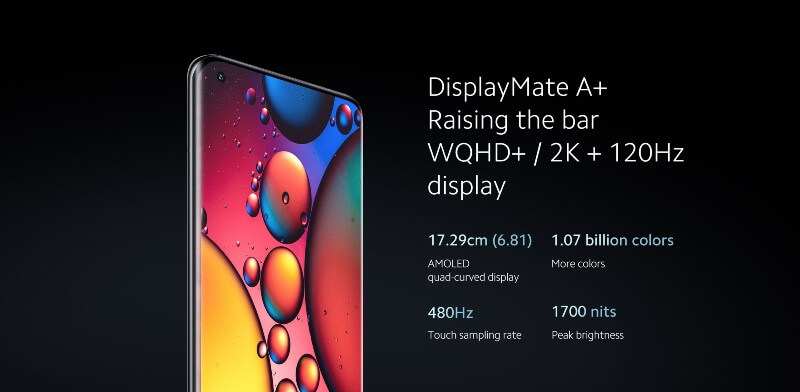
The Mi 11 Ultra has a maximum brightness of 900 nits, with a peak brightness of 1,700 nits. 5,000,000:1 is the contrast ratio. Despite these figures, it only appeared bright enough when exposed to the light. I had no trouble using it, but I was hoping for a little more punch. Support for 10-bit color, HDR10+, and DCI-P3 are among the other features. In short, the Mi 11 Ultra has deep contrast and rich colors.
The 6.81-inch AMOLED screen has a Full HD+ resolution and a 60Hz refresh rate by design. You can increase the resolution to WQHD+ and the refresh rate to 120Hz if you want to. You can use the Xiaomi Mi 11 Ultra to adjust the display to high resolution and high refresh rate at the same time. Xiaomi Mi claims that the refresh rate can vary between 30Hz and 120Hz depending on what you’re doing with the phone when set to 120Hz. The screen is absolutely stunning at its highest settings. The screen is razor-sharp thanks to the WQHD+ resolution, and the 120Hz refresh rate ensures buttery smooth animations. However, it still looks great at the lower default settings.
Xiaomi Mi 11 Ultra : Performance
The Mi 11 and Mi 11 Ultra should have the same performance, but that isn’t the case. The Mi 11 Ultra has 12GB of RAM, while the Mi 11 comes with 8GB. In our tests, the Mi 11 Ultra had a slight advantage in benchmarks thanks to the additional memory allocation. On most major benchmarks, the Mi 11 Ultra outperformed the Mi 11, but only by a small margin.
The Xiaomi Mi 11 was one of the first Smartphone’s to feature Qualcomm’s Snapdragon 888 processor. There are roughly a dozen models with the high-end chip, including the Mi 11 Ultra, a few months into 2021.
When it comes to gaming, a few tools in the Mi 11 Ultra’s toolbox come in handy. For starters, it has a 480Hz response rate, which means it responds to touch input much faster than most other phones. Furthermore, the Game Turbo software help in the management of your installed games’ success and cataloguing. Game Turbo lets you tweak settings like updates to get the best gaming experience possible.
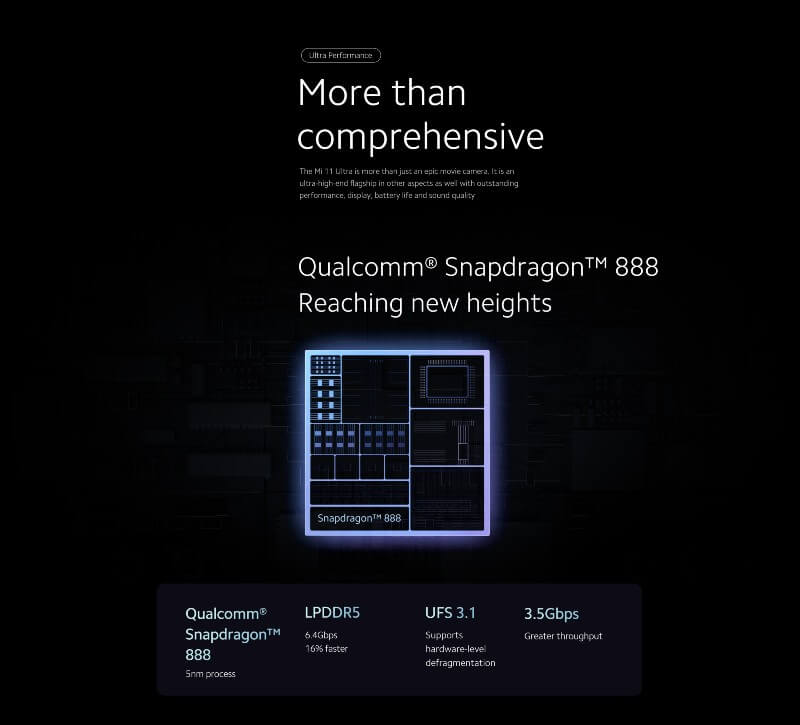
The Xiaomi Mi 11 is a good everyday phone and a good gaming phone in terms of results.
Last but not least, wireless. The Mi 11 Ultra has Wi-Fi 6E, Bluetooth 5.2, and 5G connectivity. There is no mmWave on the phone since it supports sub-6GHz 5G. For the time being, this isn’t a big deal because the phone won’t be sold in the US, but it does mean the phone won’t be future-proofed as mmWave expands globally.
Xiaomi Mi 11 Ultra : Battery
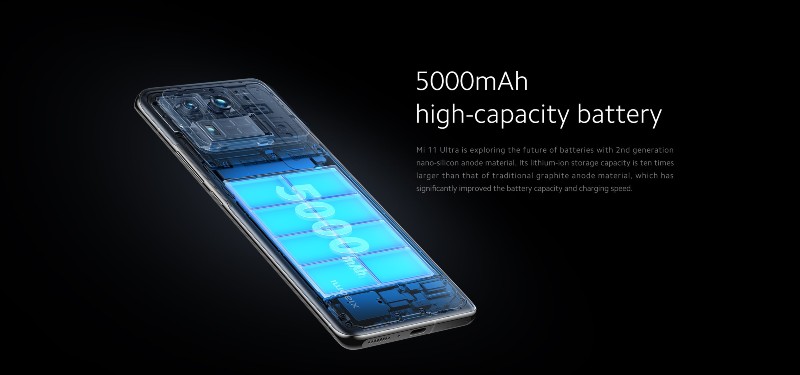
As compared to the standard Mi 11, Xiaomi has greatly improved the battery performance of the Mi 11 Ultra. To begin with, the 5,000mAh battery is 400mAh larger. This allows you to use your phone from breakfast to bedtime with a bigger battery capacity at the end of the day. I was less worried about slamming the phone down. With conscientious, measured use, the battery can easily last a day and a half. This is with the Full HD+, 60Hz setting turned on.
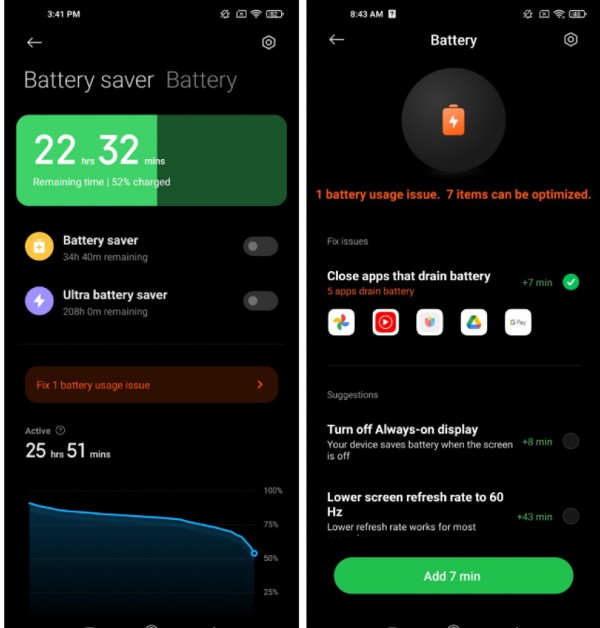
Increases in resolution and/or frame rate have an impact on battery life, but not as much as you would expect. Even with the phone’s highest settings, I was able to get an entire day out of it, but barely. It definitely outperformed the Xiaomi Mi 11.
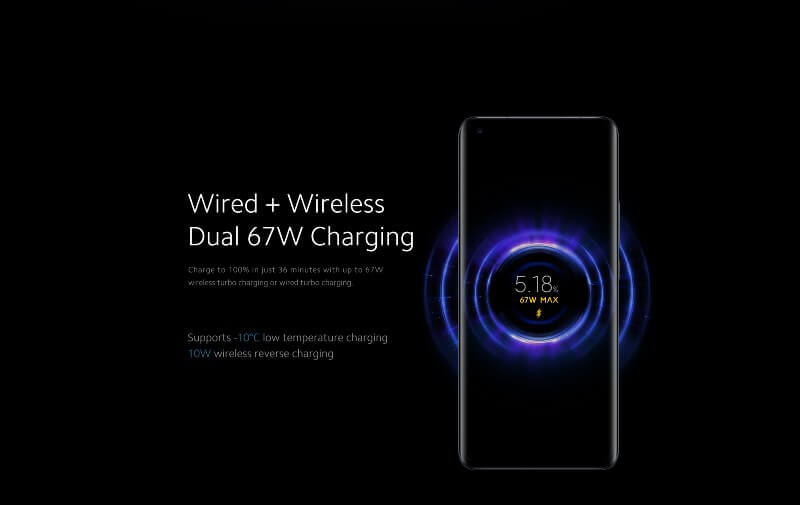
Xiaomi also equipped the Mi 11 Ultra with faster charging technology in addition to a larger battery. The Mi 11 Ultra supports 67W wired and wireless charging, while the Mi 11 supports 55W wired and wireless charging. A 67W GaN wall plug is also included in the package.
How well does it do in reality? With the 67W wired charger we saw the phone reach 100% from 0% in 37 minutes. That’s a few minutes longer than the Find X3 Pro or 9 Pro, but it’s fast enough not to matter.
Xiaomi Mi 11 Ultra : Camera

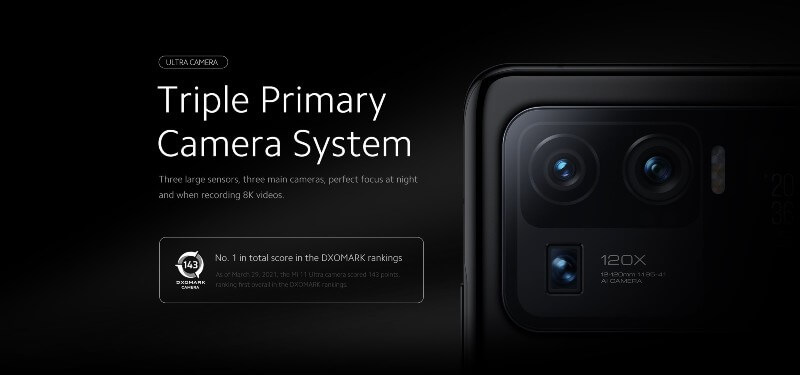
It has all-new sensors and, more significantly, a conventional wide-angle, ultra-wide-angle, and telephoto lens setup. That means it disregards the Mi 11’s “telemacro” lens in favour of a periscoped optical zoom lens. The telephoto lens supports 5x optical zoom, 10x hybrid zoom, and up to 120x digital zoom, which is the most we’ve seen on a smartphone so far.

Simultaneously, Xiaomi opted for an ultra-wide lens with an insane 128-degree field of view (FoV). For the ultra-wide, many phones stick to 107-120 degrees. The Mi 11 Ultra’s extended field of view provides plenty of space for cramming stuff into the picture. You can also use the ultra-wide for macro photography. Only the main camera will film at its maximum 50MP resolution since the other two cameras have been pixel binned down by a factor of four.


The main camera does a good job for the most part, but there is one big fault that you might note in the images above. The clarity and sharpness are outstanding. There is a lot of clarity in the videos, and there is very little noise. The majority of the photos I took with my phone look great. The problem is with color, specifically yellow. The flowers and storefront are oversaturated, making them seem unnatural. I can assure you that the yellow in these photographs is incorrect. The regular Mi 11, in reality, produces more natural yellows. It’s strange. Blues, greens, and reds, on the other hand, are all stunning. The exposure and white balance are also perfect.
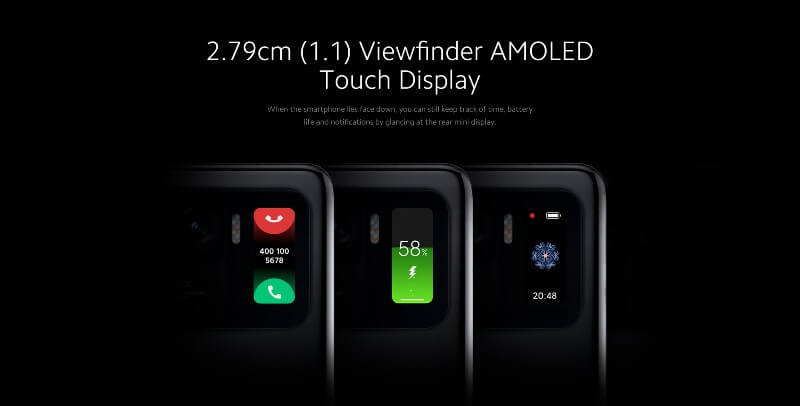
Xiaomi Mi 11 Ultra : Camera Comparisons
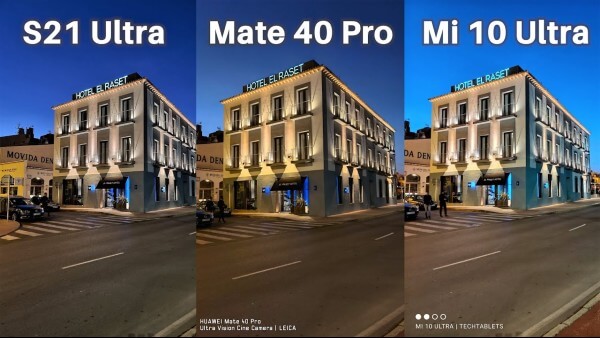
Xiaomi Mi 11 Ultra : Test
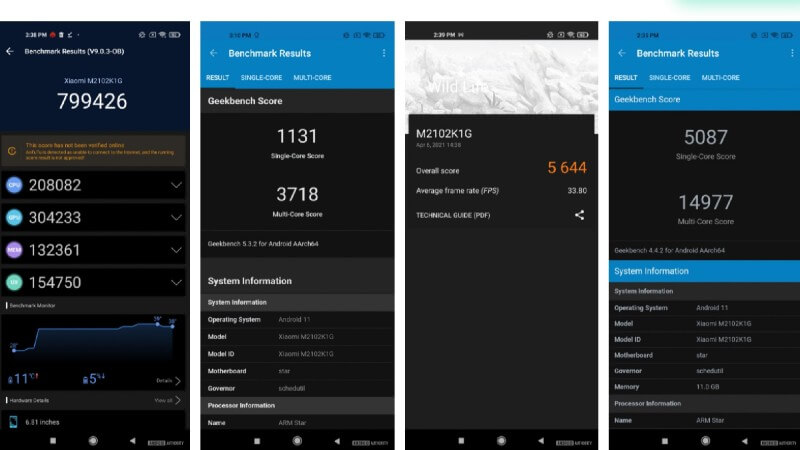
We’ll update this section once we get hold of more Information.
Product Search
Subscribe us
Get the very best of Gizmoh Man in your inbox. News, reviews, deals, apps, gaming and more.
Latest Updates
Weekly Poll
Brands
Categories


The Controversial Pokémon Mod in Palworld: A Unique Twist on the Franchise

Enhance Your Viewing Experience with Nvidia’s RTX Video HDR

Addressing Xbox Player Complaints: Palworld Developer Explains Certification Process Delay

Why Dragon’s Dogma 2 Director Wants to Avoid Fast Travel in Open World Games

WWE 2K24: Release Date, Platforms, Cover Superstars, and New Changes

The Future of AI Training: The Role of Human Workers and Generative AI Tools

Palworld: The Game that Sold 4 Million Copies in Just 3 Days!












